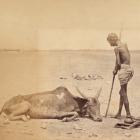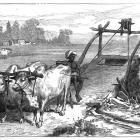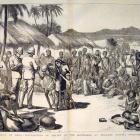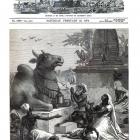Epidemics
British relief efforts certainly had their flaws, but one of the cruel ironies of these famines is that the success or failure of the British to provide enough food was only indirectly related to the events’ appalling death tolls. Instead, recent scholarship has shown that while starvation did happen, epidemic diseases wielded the scythe most destructively.38 Diseases attacked people without regard for social class or economic status, as climatic and sanitary factors supported the breeding of disease vectors.39 Further, transformed social and economic networks and altered social behavior patterns contributed to the transmission and spread of diseases. For example, population mobility led to the spread of malaria, with migrants moving in and out of endemic malaria zones and malaria carriers moving back into areas where the diseases had not previously been endemic.40 These epidemics were then intensified by overcrowding, poverty, and malnutrition.
Past studies have shown that famine mortality occurred in two phases. First, in the less lethal stage, the fundamental causes of death were cholera, dysentery, and smallpox, all of which were spread by migration, unsanitary conditions, close contact between people in relief camps, and consumption of decayed old food. Then, in the far more lethal phase, the main cause of death was malaria. This happened, somewhat paradoxically, in the second year of famine—when rain had fallen, food cost had declined, supplies had increased, and food nutrition among the working poor had risen gradually. However, the development of epidemic malaria was aided by torrential rain, which favored the breeding of the anopheles mosquito, the vector responsible for transmitting the malaria parasites, Plasmodium falciparum.41
38 T. Dyson, “On the Demography of South Asian Famines, Part I,” Population Studies 45, no. 1 (1991): 5-25. Ibid, “On the Demography of South Asian Famines, Part II.” Population Studies 45, no. 2 (1991): 279-97. D. Arnold, “Social Crises and Epidemic Disease in the Famines of Nineteenth-Century India,” Social History of Medicine 6 (1993): 385–404.
39 B. M. Bhatia, Famines in India: A Study in Some Aspects of the Economic History of India (London and New Delhi: Asia Publishing House, 1967); S. Abhirajan, “Malthusian Population Theory and Indian Famine Policy in the Nineteenth Century,” Population Studies 30 (1976): 5–14; Klein, “When the Rains Failed,” 185-214; Davis, Late Victorian Holocausts; D. Hall-Matthews “The Historical Roots of Famine Relief Paradigms,” in A World Without Famine? New Approach to Aid and Development, eds. H. O’Nell and J. Toye (Basingstok: Macmillan, 1998), 107–27.
40 Arnold, “Social Crises and Epidemic Disease,” 401.
41 Ibid; Dyson, “On the Demography of South Asian Famines, Part I,” 14, 22; E. Whitecombe, “Famine Mortality,” Economic and Political Weekly 28, no. 1 (1993): 69–79.















